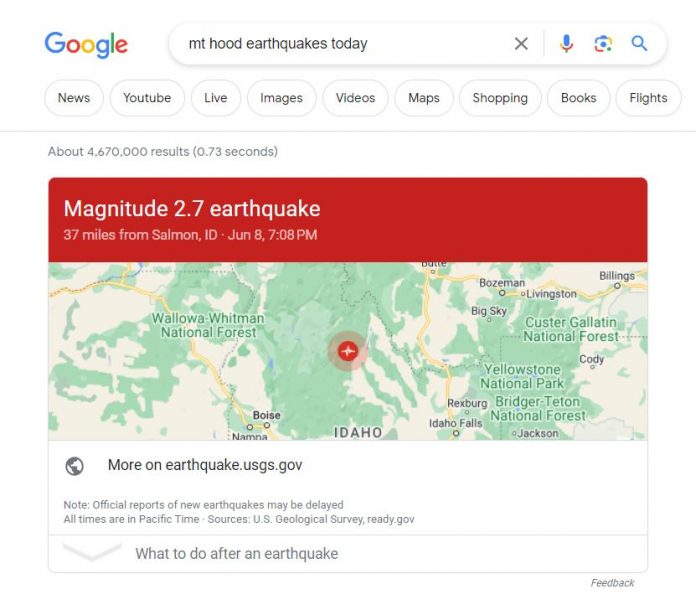On a seemingly calm day, Mount Hood, a potentially active volcano, revealed its seismic nature with a series of earthquakes. The initial 3.0-magnitude earthquake at 2:35 p.m. triggered a chain of events, with the second most significant quake, measuring 2.6 in magnitude, striking just a minute later at 2:36 p.m. These tremors were reported by the Pacific Northwest Seismic Network, shedding light on the seismicity of this iconic mountain.
Seismic Symphony: Exploring Mount Hood’s Earthquake Concerto
Unveiling the Earthquake Sequence: The U.S. Geological Survey (USGS) was swift in reporting the two notable earthquakes that rattled the vicinity. However, it’s worth noting that the USGS did not report the smaller quakes, some of which measured as low as 0.2 in magnitude. While less significant, these minor tremors contributed to the overall seismic activity in the region.
Epicenter Details: The initial earthquake, measuring 3.0 in magnitude, originated just south of Mount Hood’s summit. The second quake, with a magnitude of 2.6, occurred in close proximity to Timberline Lodge, providing a closer look at the geological dynamics within the mountain’s vicinity.
Mount Hood’s Seismicity: As a potentially active volcano, Mount Hood experiences frequent minor earthquakes. According to data from the Pacific Northwest Seismic Network, it is common for the mountain to experience at least one minor earthquake per week. These seismic events serve as reminders of the mountain’s geologic activity, underscoring the ongoing processes occurring beneath its majestic exterior.
Conclusion: The recent series of earthquakes near Mount Hood serves as a vivid reminder of the mountain’s geological character. With the initial 3.0-magnitude quake followed closely by a significant 2.6-magnitude tremor, the region experienced a momentary awakening of seismic energy. As scientists and seismologists continue to monitor and study Mount Hood’s seismicity, these events provide valuable insights into the mountain’s complex geologic processes.




